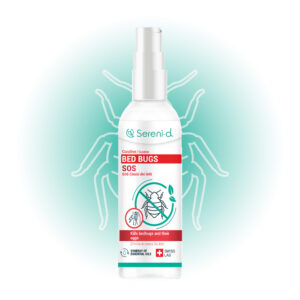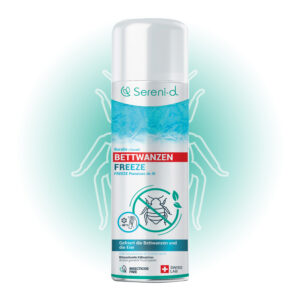With one in ten households infested according to ANSES, bed bugs are a real public health problem. From public places to private homes, everyone is affected. Faced with the scale of the problem, the government decided several years ago to take action by introducing various forms of assistance, such as partial coverage of the cost of eradication treatments. Here is an overview.
Key information
➡️ If you have any questions about infestation, you can call the dedicated freephone number 0 806 706 806.
➡️ You can also find practical information on how to combat bed bugs at stop-punaises.gouv.fr.
➡️ The CAF (family allowance fund) may grant exceptional assistance of up to €600 to finance bedbug treatment.
➡️ For landlords, there is an ANAH (national housing agency) subsidy that can cover up to 50% of treatment costs, up to a limit of €10,000.
➡️ Landlords have a legal obligation to provide decent, pest-free accommodation. In the event of an infestation, they must pay for treatment, unless there is evidence of negligence on the part of the tenant.
➡️ In social housing buildings, social landlords must organise and finance collective treatments, with the support of the State and local public assistance.
CAF financial assistance for bed bugs
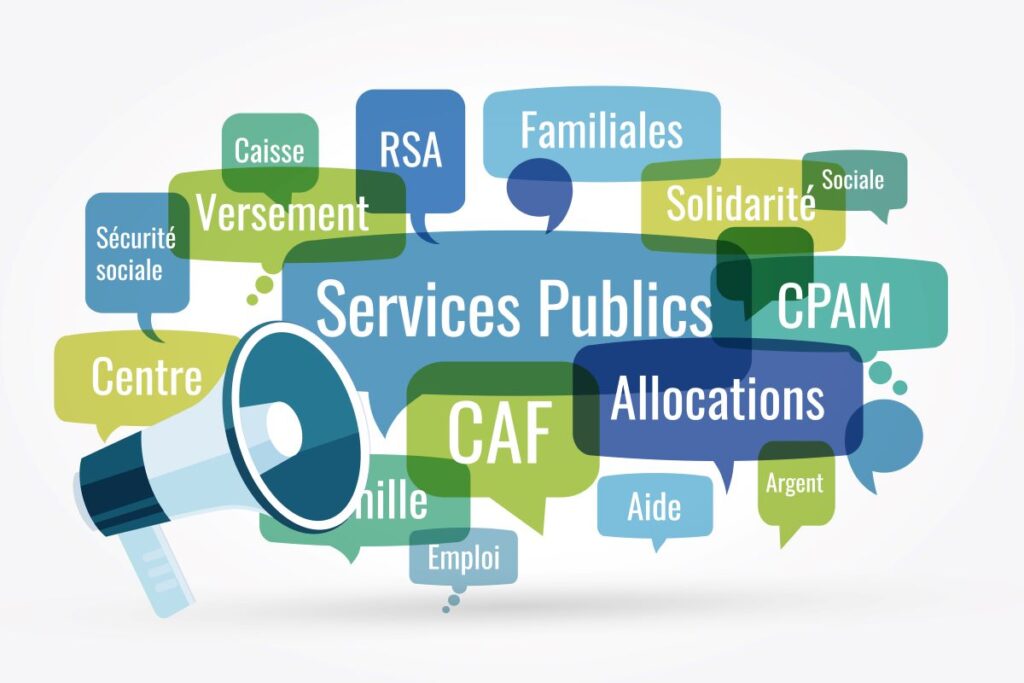
The Family Allowance Fund (CAF) may grant, subject to means testing, exceptional assistance to finance all or part of:
- bedbug treatment carried out by an approved company,
- the replacement of infested bedding (mattresses, bed bases, sheets),
- or certain items of furniture deemed irreparable.
How much is this financial assistance?
➡️It can cover bed bug treatments up to a limit of €600.
How to apply for this financial assistance?
To obtain this assistance, you must submit a preliminary application to the CAF in your department.
You must provide an invoice proving that a qualified professional has carried out the work. Please also include photos of the infested bedding or furniture and, if necessary, medical certificates proving the cost of treatment.
Please note that this assistance is not automatic: it is allocated on a case-by-case basis, after reviewing the household’s situation. Priority is given to the most modest households, particularly those with health issues (children, elderly people, repeated night-time awakenings).

Aid for property owners
For landlords, a subsidy from the ANAH (Agence nationale de l’habitat) can cover up to 50% of the treatment costs, up to a limit of €10,000, subject to means testing and energy performance criteria.
Please do not hesitate to ask your local council. The city of Paris, for example, offers a subsidy covering up to 50% of expenses, up to a limit of €1,500.
In several French cities, free hotlines provide practical advice, maintenance tips and instructions on how to limit the spread.
Tenants infested with bed bugs: what compensation are they entitled to?
Landlords are obliged to provide tenants with decent accommodation, which means it must be free of pests and parasites (ELAN Act of 2018).
➡️ Best practice: Before renting out a property, landlords can call in a dog detection company to confirm whether or not bed bugs are present.
If you discover bed bugs a few days or weeks after moving in, you can ask your landlord to cover the cost of treatment. However, if you discover an infestation of bed bugs during your tenancy, the request for coverage is more complex…
In the event of negligence or lack of maintenance on the part of the tenant (which could cause the pests to appear), the treatment will be at the tenant’s expense. For information, it is up to the landlord to prove this, which in practice is very difficult.
In any case, it is essential to notify your landlord promptly and keep a written record of your exchanges, accompanied by photos or tangible evidence of the infestation. This will facilitate the process and protect your rights in the event of a dispute.
Is there insurance against bed bugs?
Traditional home insurance rarely covers the risk of bed bugs. Coverage is very limited, even as an optional extra.
To fill this gap, there are now new insurance companies such as Luko, Friday and Badbugs that offer comprehensive coverage: professional intervention, rehousing, psychological support, etc.
➡️ For more information: The practical guide to bed bug insurance
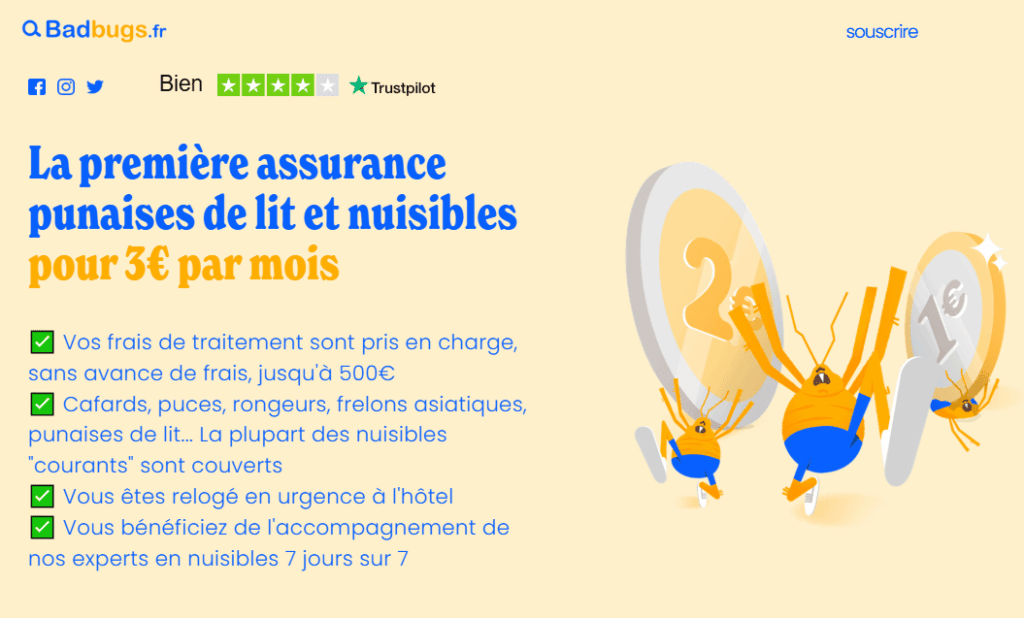
Social housing buildings are particularly vulnerable to bed bug infestations. High population density, close quarters and the regular movement of used furniture and bedding encourage the rapid spread of these pests from one flat to another.
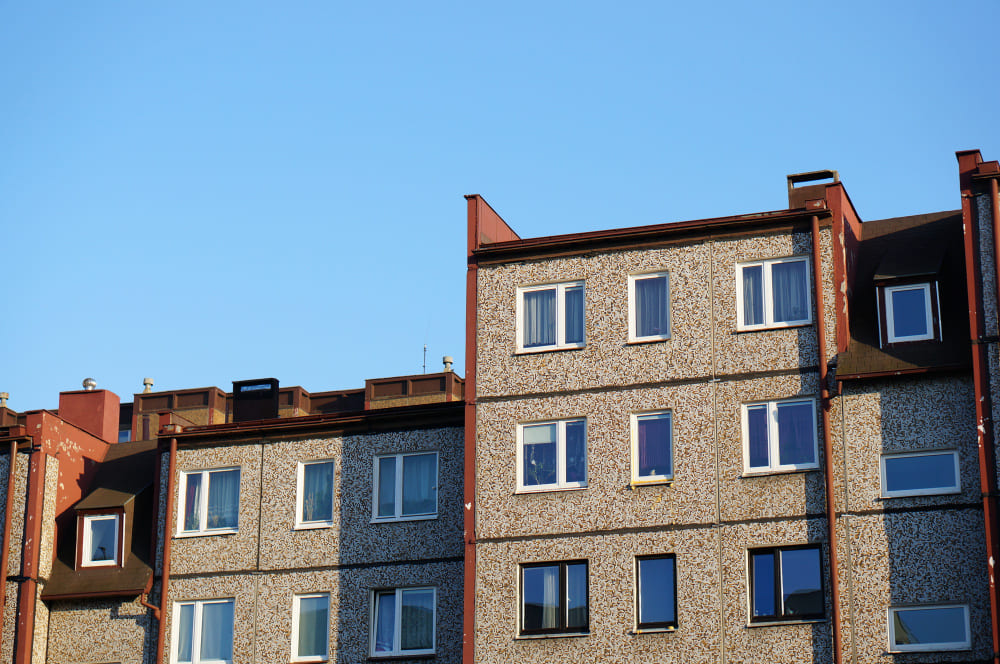
As managers of collective housing, social landlords have a legal obligation to ensure the health and safety of their buildings. A bed bug infestation is therefore considered to be a violation of tenants’ living conditions.
Their role consists of:
- organise bedbug diagnosis and treatment in common areas (cellars, landings, corridors),
- finance all or part of the interventions deemed necessary to eradicate the infestation,
- disseminate prevention instructions to residents to limit the spread (avoid leaving infested mattresses and bed bases on public roads, use sealed bin bags, etc.).
In the most serious cases, public assistance may be available: for example, the ANAH (National Housing Agency) may intervene to finance pest control work in social housing.
➡️ See also: Bed bugs in co-owned properties.
How to choose a pest control professional?
False diagnoses, exorbitant prices, use of dangerous products… beware of the many scams in this sector!
Choose a professional or an approved pest control company for effective and environmentally friendly treatment.
NB: When using an insecticide, ensure that the professional has a valid Certibiocide Certificate. This certificate guarantees that the products have been assessed for effectiveness and risks before being placed on the market.
Choosing a certified professional guarantees that you will have a reliable and thorough specialist who uses effective and environmentally friendly treatments.
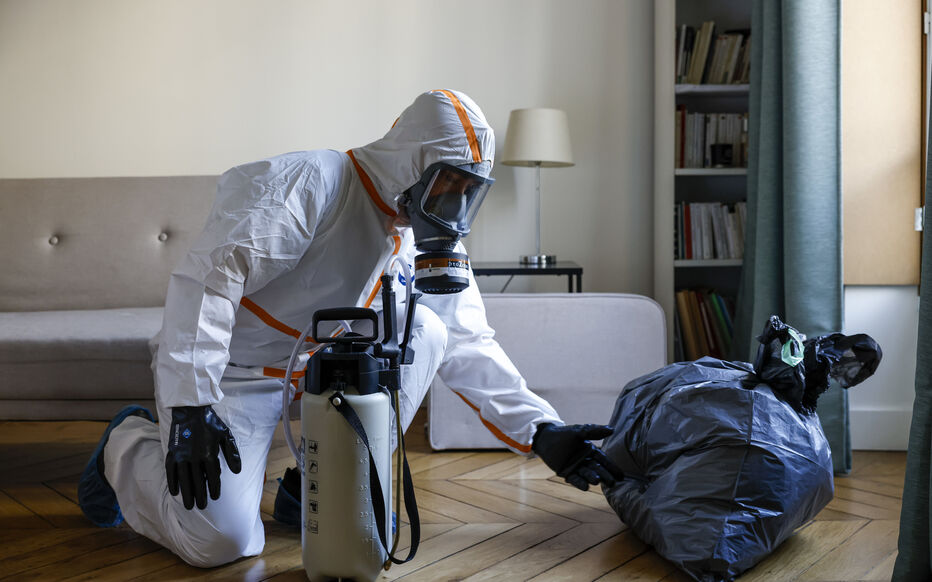
How to get rid of bed bugs?
ANSES recommends using alternative methods to chemical insecticides. This is because the use of chemicals can cause poisoning and also increases the resistance of bedbugs to insecticides, reducing their effectiveness. Not to mention that chemical insecticides also contribute to environmental pollution.
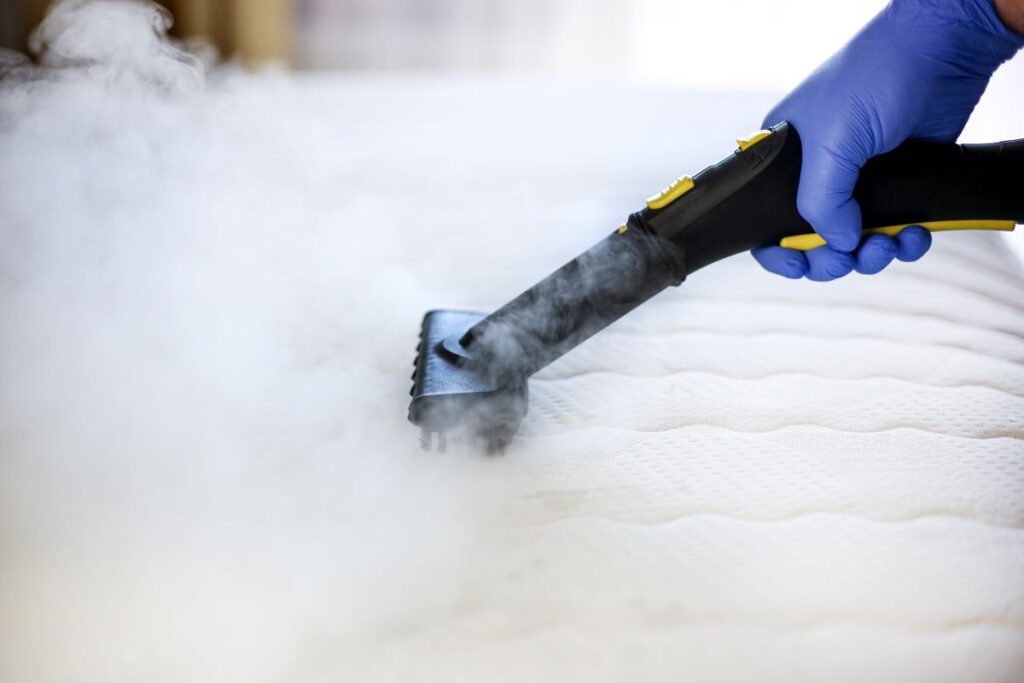
Mechanical control
To effectively and naturally eradicate bed bugs, simple steps should be taken:
- Clean and vacuum all surfaces in the infested room thoroughly every day. Remember to dispose of the dust container or vacuum bag in a tightly sealed bag to prevent the spread of these pests, and to clean the vacuum tube.
- Wash bed linen, clothing, carpets and curtains in the washing machine at 60°C and tumble dry for 30 minutes on a hot cycle to kill the most resistant eggs and bed bugs.
- Freeze any laundry that cannot be washed at 60°C in the machine (for 72 hours).
- Use a steam cleaner on all surfaces where it can be applied. Dry steam kills bedbugs, larvae and eggs immediately.
Natural insecticides
Promote the use of natural insecticides to avoid any risk of poisoning and to prevent bedbugs from developing resistance to chemicals.
At Sereni-d, we have developed SOS Bedbugs to eliminate 100% of bed bugs at all stages of development (eggs, larvae, adults). Formulated with plant-based pyrethrum flower extract and essential oils with insecticidal properties, this spray provides immediate, safe and long-lasting protection.
It should be sprayed on textiles, all bedding, and on infested surfaces (skirting boards, bedside tables, behind furniture, frames, etc.).
👉 To go further: The complete protocol against bed bugs
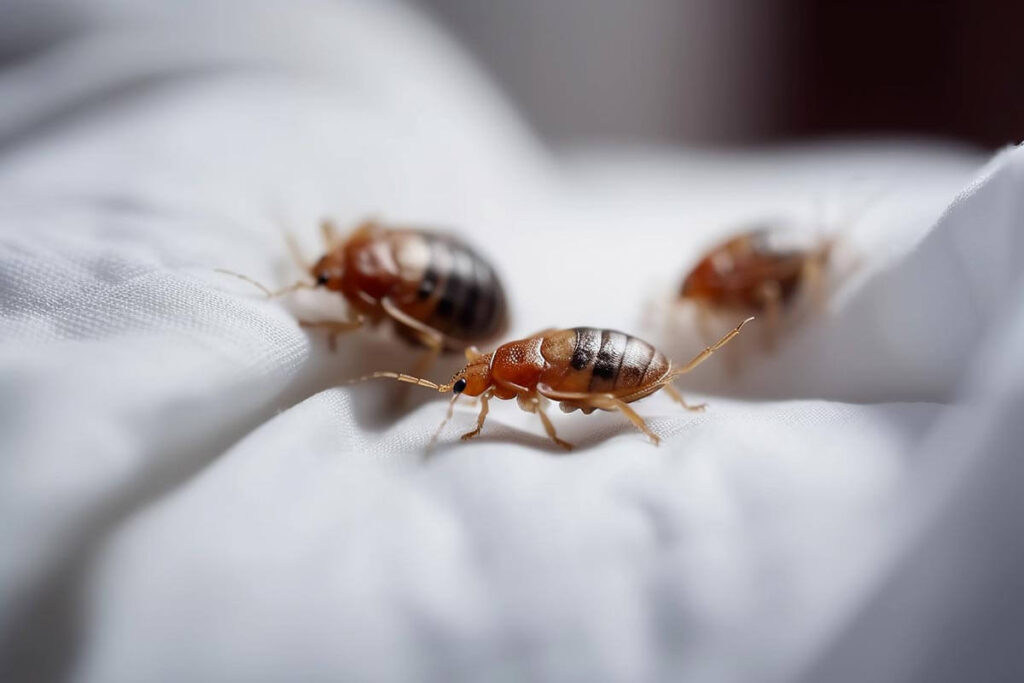
Protect yourself with Sereni-d!
Discover our complete range of bed bug products for the prevention and treatment of bed bugs.
-
SOS Bed bugs
24,90 € -
DIATOMACEOUS EARTH Bed Bugs
21,90 € -
FREEZE Bedbugs
21,90 €

